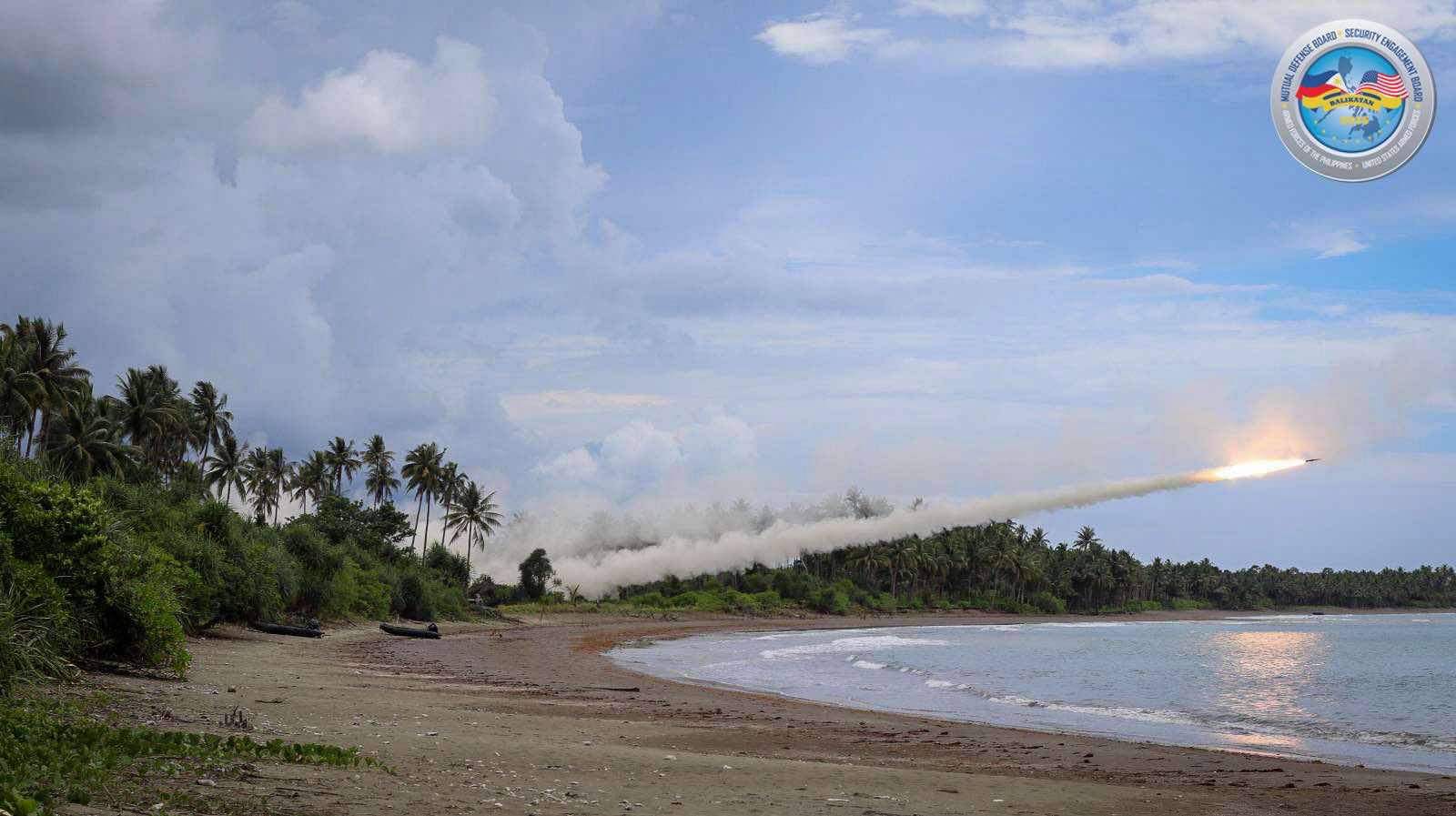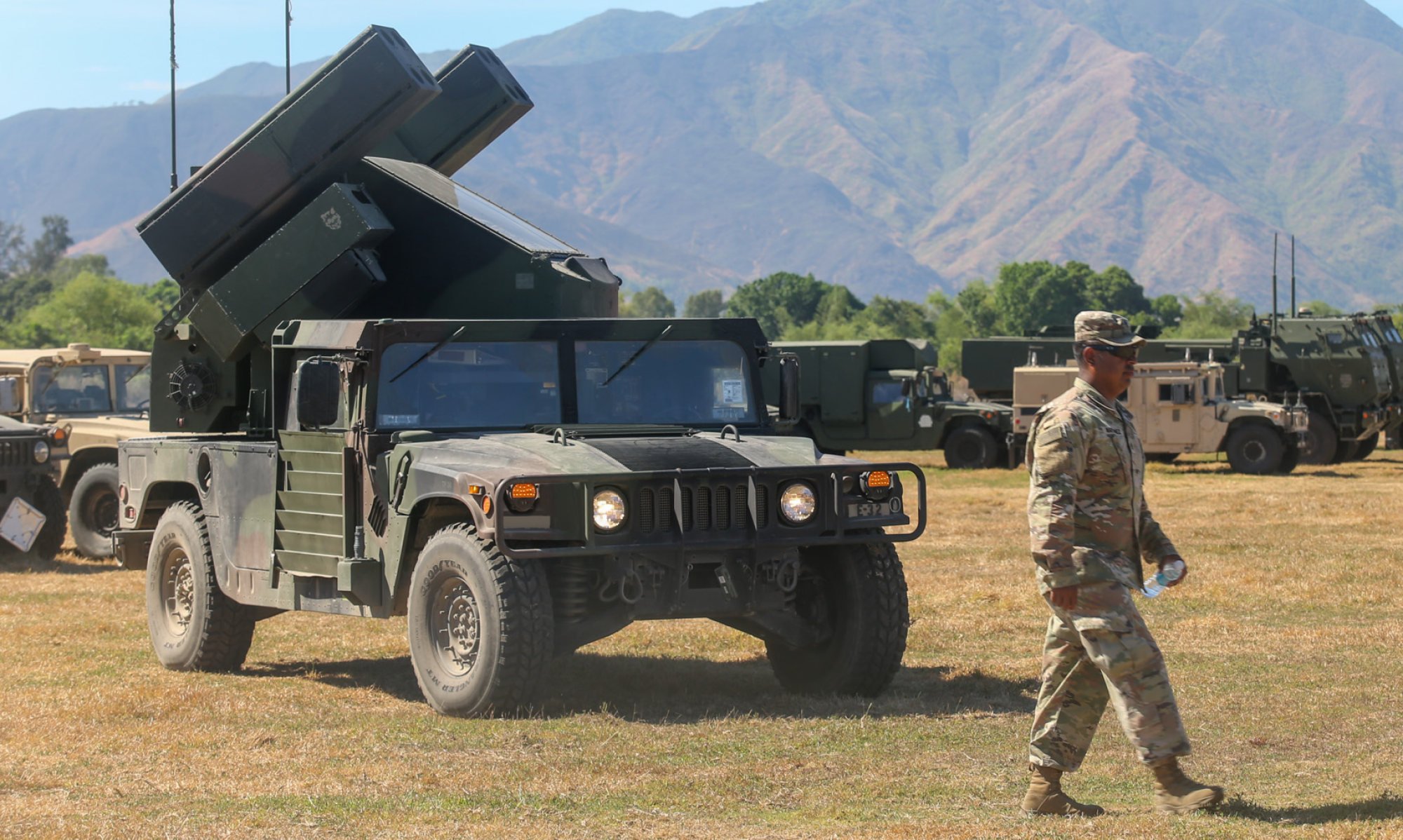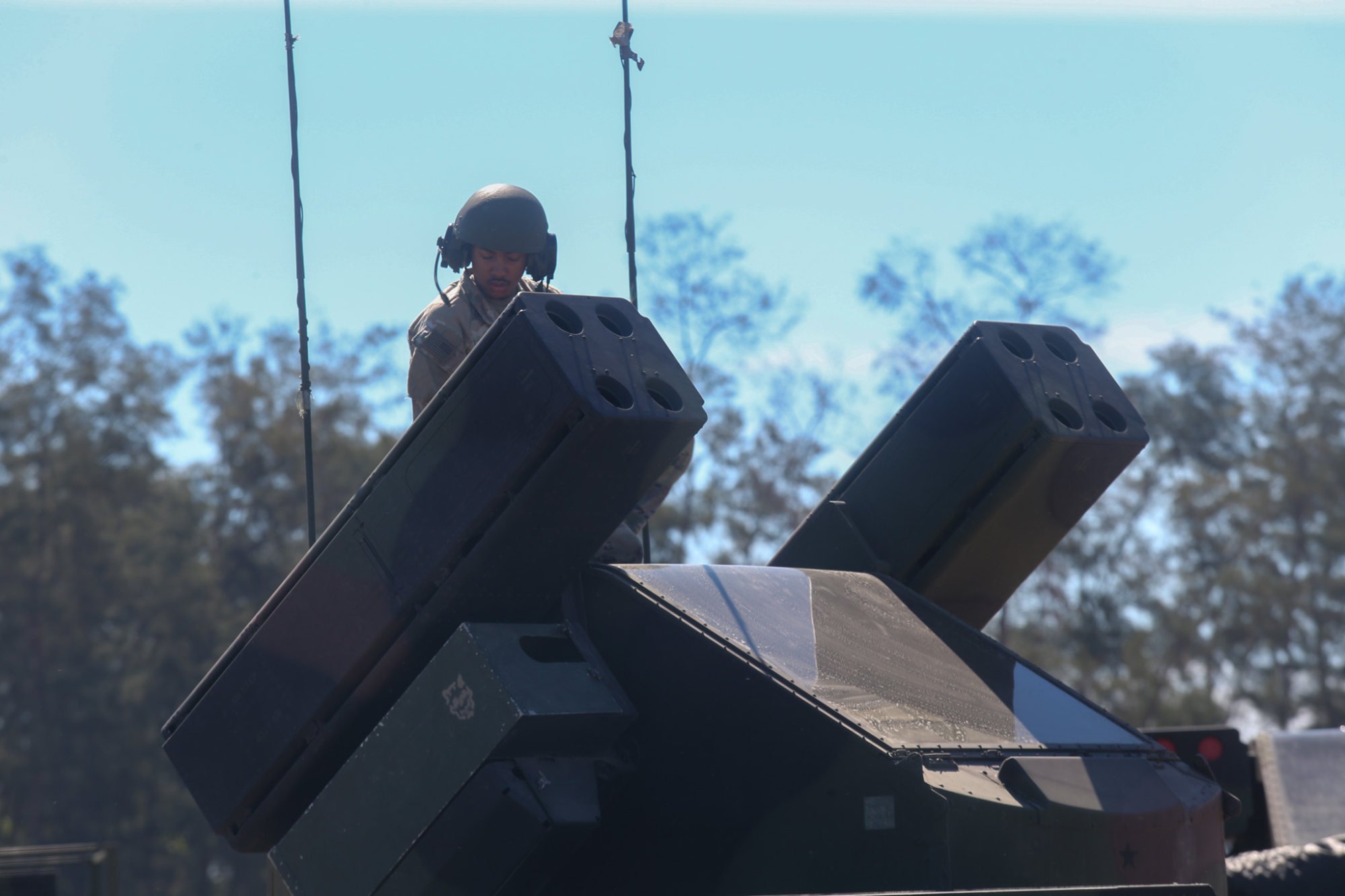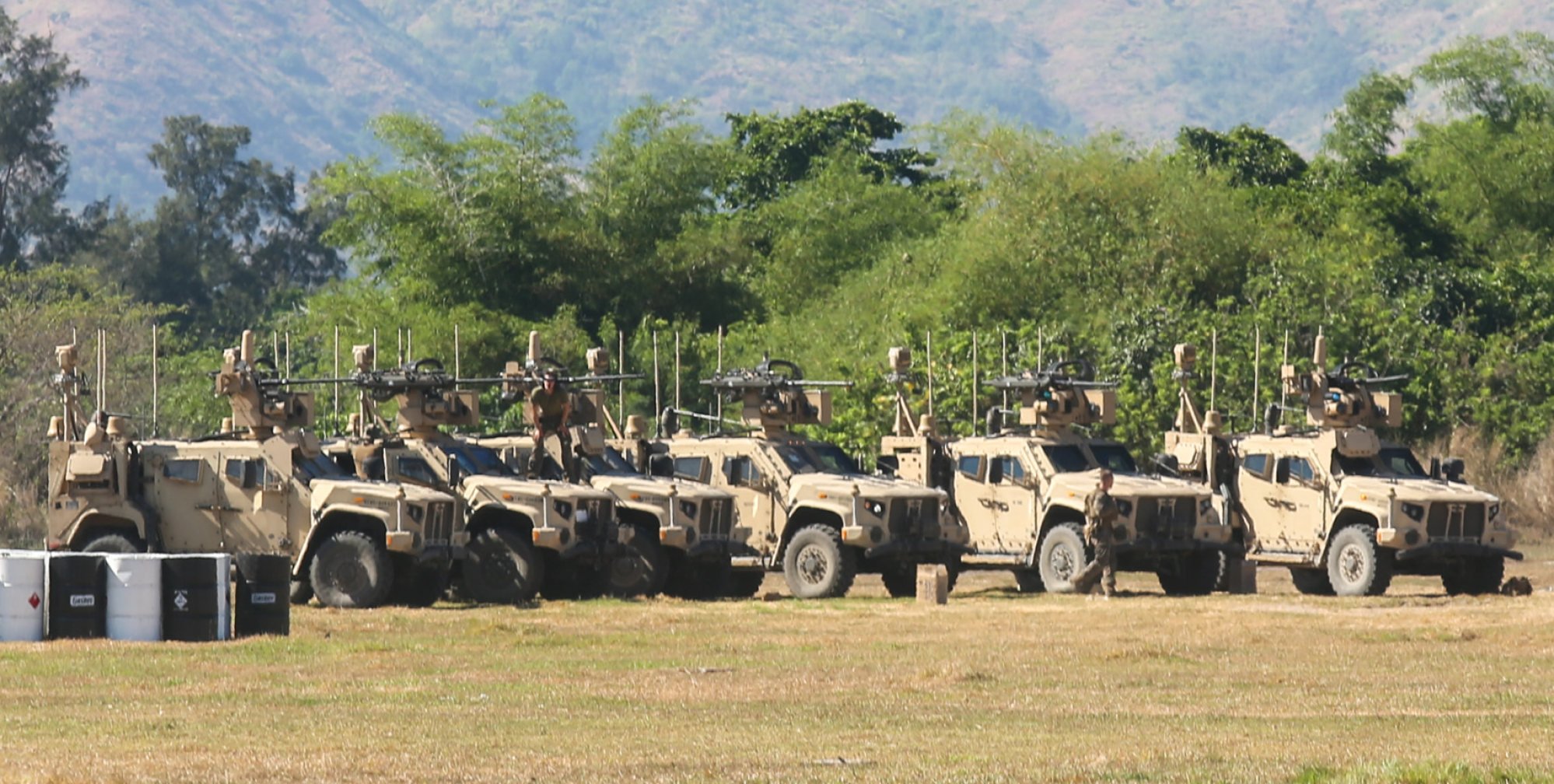US, Philippines flex military muscle with Himars live-fire drills near South China Sea
The use of Himars and NMESIS during the Balikatan exercise demonstrates the allies’ ability to respond to provocations, analysts say

Long-time allies the United States and the Philippines have flexed their military muscle by firing six rockets in a defence drill on Palawan Island, in a show of sustained American commitment to Manila.
Defence experts say the show of strength from the M142 High Mobility Artillery Rocket System (Himars) could signal its potential long-term deployment, much like the Typhon arsenal that previously raised China’s ire.
They caution however that it would be premature to consider it as sign of a golden age in US-Philippine relations under President Donald Trump.
On Monday, about 500 troops from the Philippines, the US and Australia conducted a maritime interdiction drill in Rizal, where Manila’s navy intercepted a remote-controlled vessel approaching the coast.
Part of this year’s ongoing large-scale Balikatan – or shoulder to shoulder – exercise, the drill culminated in a precision strike showcasing the Himars system’s quick and accurate response to amphibious threats.
“We achieved everything we set out to achieve,” US Marines commander Major General Thomas Savage told reporters. “We’re trying to demonstrate a capability to work together. The exercise you saw is agnostic of an enemy. If somebody is trying to interfere with a sovereign nation, that’s what we’re trying to demonstrate.”

Manila and the US are bound by a 1951 Mutual Defence Treaty that calls on both sides to help each other in times of aggression by an external power.
Savage’s counterpart, Brigadier General Antonio Mangoroban Jnr of the Philippine Marines, stressed the drills were not related to long-running territorial disputes between Manila and Beijing in the South China Sea.
“We planned this independently,” Mangoroban said. “So I think this is a totally different agenda we have with the US and other partner countries.”
Security analysts say the Balikatan drills, being held mainly in Northern Luzon and Palawan Island until May 9, allow both sides to familiarise themselves with new technologies.
Julio Amador III, founder of the geopolitical risk firm Amador Research Services, told This Week in Asia the drills were vital for preparation in case the two nations needed to respond to regional flashpoints.
Beijing claims nearly the entire South China Sea under its nine-dash line doctrine, dismissing overlapping claims from neighbours such as the Philippines, Vietnam and Malaysia. It also rejects a 2016 international arbitral ruling invalidating its sweeping claims, arguing the decision lacks legal merit.
“When it comes to deterrence, what the two allies are showing is that they can effectively respond to provocations coming from countries that seek to overturn the status quo,” Amador said.
Vincent Kyle Parada, a former defence analyst for the Philippine Navy, said that while Manila lacked a sizeable air and naval force, deploying dedicated air defence and anti-ship missile systems would help offset those military shortcomings.
“They deter hostile forces through denial and punishment. Denial because they increase the cost of hostile action by influencing an enemy’s strategic calculus; and punishment, because they will inevitably degrade an enemy’s forces should they decide to go through with it,” Parada told This Week in Asia.
Right now, according to Parada, US and Philippine forces are working to enhance their anti-access and area-denial capabilities to provide adequate cover for areas such as the South China Sea and the Luzon Strait facing Taiwan.
“We know that the BrahMos will likely be deployed in Palawan or Northern Luzon; and that the Typhon was previously deployed at Laoag but has since been moved to an undisclosed location. Doctrine dictates that these systems redeploy after firing in order to avoid being targeted by enemy forces,” he said.
Manila acquired its first of three batches of BrahMos supersonic cruise missiles from India under a US$375 million deal in 2024. A second batch was delivered to the country just this month.
The Typhon, a US Army missile system deployed in Northern Luzon last April, can launch SM-6 and Tomahawk missiles with ranges that cover the South China Sea and Taiwan Strait.

“Because of the size of their launchers, they need good roads, wide open spaces, and nearby airfields in order to move quickly, limiting their use to the main islands,” Parada said.
The latest US asset deployed in the Philippines was the anti-ship missile Navy-Marine Expeditionary Ship Interdiction System (NMESIS). Parada said this system’s compact size and mobility made it unique.
“That makes it ideal for use in rugged terrain like the Batanes, where small islands, steep hills and mountains, and fewer roads mean less room for manoeuvre,” Parada said.
‘There’s more where that came from’
As to whether the US assets were being used as a back door for longer-term deployments – similar to the Typhon system last year – Parada said logistically it was more efficient to leave them in the country for future drills.
“So rather than them being game changers on their own, the deployment of these systems is mainly a message to Beijing: there’s more where that came from,” Parada said.
The US, he said, was looking into leasing a large storage facility at Subic Bay, a natural harbour on the west coast of Luzon around 100km (62 miles) northwest of Manila, for reserve supplies.
Subic Bay served as a major US naval base until 1992, when American forces withdrew following the Philippine government’s decision not to renew the lease.
“What we’re not sure of is whether that includes traditionally offensive capabilities like missiles, drones, and loitering munitions or just your standard vehicles, spare parts, engineering assets, communications equipment, and the like,” he said.
On Saturday, the US deployed the NMESIS in Batanes province, at the northernmost tip of the Philippines facing Taiwan, using a US Air Force C-130 aircraft as part of a Balikatan island-retaking scenario.

Asked why the province was chosen, US Marine commander Colonel John Lehane told reporters that Batanes was the available training site offered by the Philippine military.
Geopolitical risk adviser Amador said Manila had the right to deploy defence systems wherever it chose on its territory.
The firing of Himars was a display of US involvement in the defence of the Philippines following recent visits and statements by Trump officials, said Chris Gardiner, CEO of the Institute for Regional Security in Australia.
“The Himars and Typhon systems make clear to any country moving into Philippines waters with malevolent intent that they will likely suffer significant losses, thus strengthening deterrence of any such misadventure,” Gardiner told This Week in Asia.
Parada, however, warned that it would be premature to think that the second Trump presidency would mark a zenith in US-Philippine ties.
“Trump’s volatile and transactional approach to foreign policy means that the onus is on the [Ferdinand Marcos Jnr] administration to continuously remind Washington of its strategic value – whether it’s opening up more bases for access to US forces, buying US-made defence equipment, or some other measure to increase Washington’s stake in the country’s security,” he said.